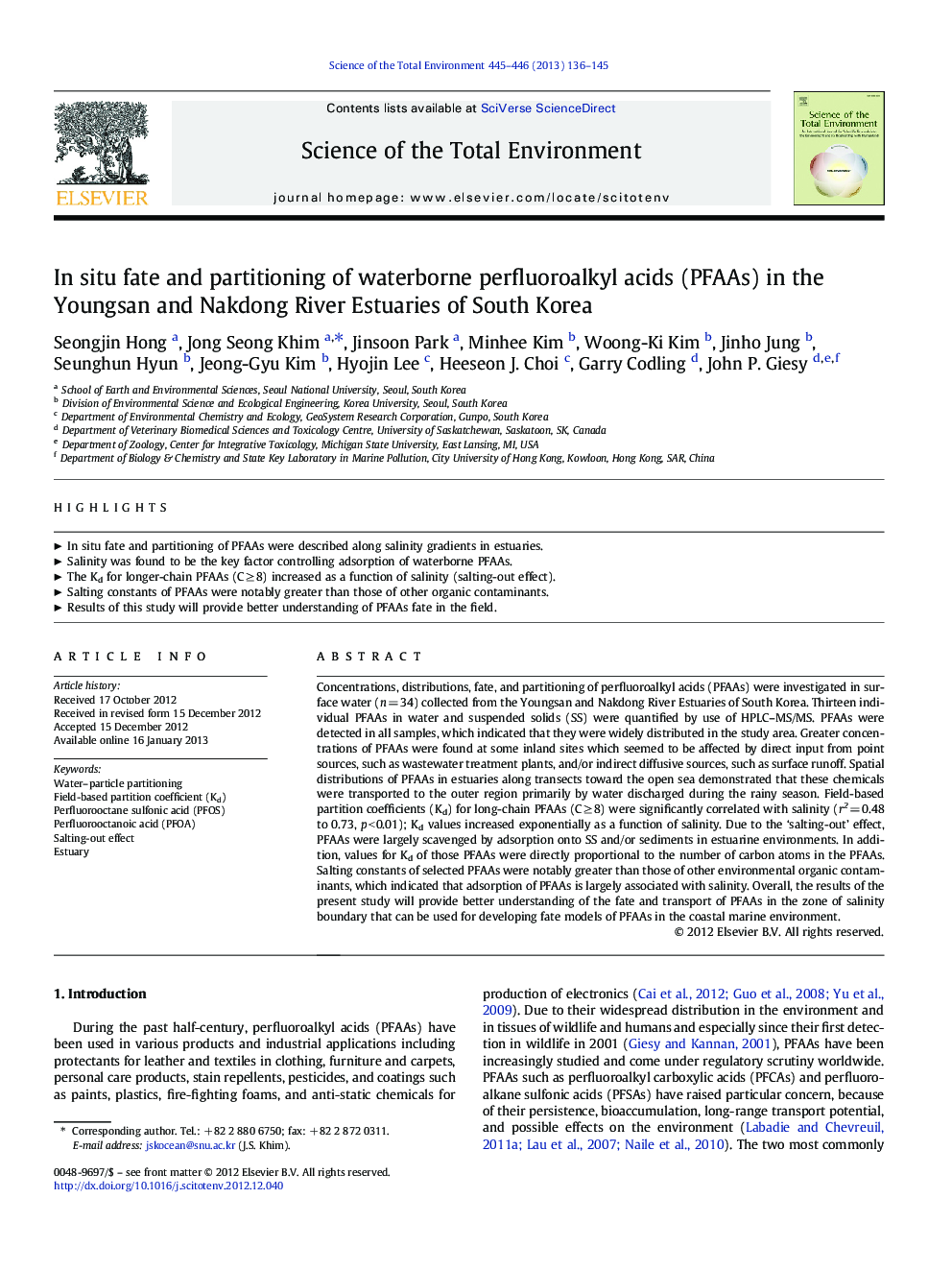| Article ID | Journal | Published Year | Pages | File Type |
|---|---|---|---|---|
| 4428936 | Science of The Total Environment | 2013 | 10 Pages |
Concentrations, distributions, fate, and partitioning of perfluoroalkyl acids (PFAAs) were investigated in surface water (n = 34) collected from the Youngsan and Nakdong River Estuaries of South Korea. Thirteen individual PFAAs in water and suspended solids (SS) were quantified by use of HPLC–MS/MS. PFAAs were detected in all samples, which indicated that they were widely distributed in the study area. Greater concentrations of PFAAs were found at some inland sites which seemed to be affected by direct input from point sources, such as wastewater treatment plants, and/or indirect diffusive sources, such as surface runoff. Spatial distributions of PFAAs in estuaries along transects toward the open sea demonstrated that these chemicals were transported to the outer region primarily by water discharged during the rainy season. Field-based partition coefficients (Kd) for long-chain PFAAs (C ≥ 8) were significantly correlated with salinity (r2 = 0.48 to 0.73, p < 0.01); Kd values increased exponentially as a function of salinity. Due to the ‘salting-out’ effect, PFAAs were largely scavenged by adsorption onto SS and/or sediments in estuarine environments. In addition, values for Kd of those PFAAs were directly proportional to the number of carbon atoms in the PFAAs. Salting constants of selected PFAAs were notably greater than those of other environmental organic contaminants, which indicated that adsorption of PFAAs is largely associated with salinity. Overall, the results of the present study will provide better understanding of the fate and transport of PFAAs in the zone of salinity boundary that can be used for developing fate models of PFAAs in the coastal marine environment.
► In situ fate and partitioning of PFAAs were described along salinity gradients in estuaries. ► Salinity was found to be the key factor controlling adsorption of waterborne PFAAs. ► The Kd for longer-chain PFAAs (C ≥ 8) increased as a function of salinity (salting-out effect). ► Salting constants of PFAAs were notably greater than those of other organic contaminants. ► Results of this study will provide better understanding of PFAAs fate in the field.
